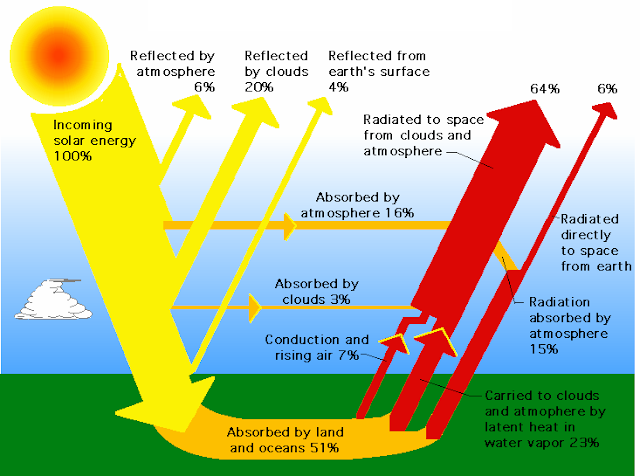Sources of soil heat
There are various sources of soil heat namely, solar radiation, biochemical reactions, conduction, precipitation, exposure and vegetation etc.
(i). Solar radiation
Radiant energy from the sun is the power source that determines the thermal regime of the soil and the growth of plants. Agriculture is the exploitation of solar energy in the presence of an adequate water supply and sufficient plant nutrients to maintain plant growth. Much of the radiation from the sun is dissipated and distributed by components of the earth’s atmosphere as it passes downward toward the earth. The heat absorbed by the surface of the earth from the solar radiation is affected by several parameters like latitude, distribution of land and water, slope of the land etc.
(ii) Bio-chemical reactions
In the soil atmosphere a variety of chemical reactions are going on and during such reaction liberation of large amount of heat in the soil environment results. Besides decomposition of organic matter and other crop residues in the soil and other microbial processes liberate large amounts of heat in the soil and thus contributes soil heat.
(iii) Conduction
The inner atmosphere of the earth is very hot, the conduction of the heat to the soil environment is very slow. Generally, during night, the upper most surface soil becomes cooler than sub-surface soil. Thus heat flows from the regions of sub-soil to the region of surface soil (cooler soil layer).
(iv) Precipitation
During the winter season precipitation increases soil heat because of its (precipitation) higher specific heat.
(v) Exposure
Exposure is of little importance in the tropics because of the high elevation of the sun. It is of significance in the middle latitude where the elevation is lower. The greater the percentage of diffuse sky radiation in the global radiation, the smaller is the difference in the incoming solar energy per unit area for slopes of different exposures.
(vi) Vegetation
Vegetation plays a significant role of soil heat because of the insulating properties of plant cover. Bare soil is unprotected from the direct rays of the sun and becomes %try warm during the hottest part of the day.
You might interest more articles about Soil Science
Useful Agricultural Websites
